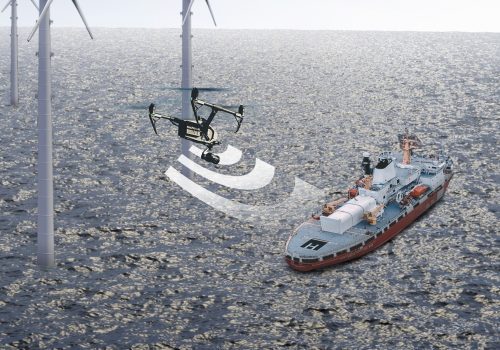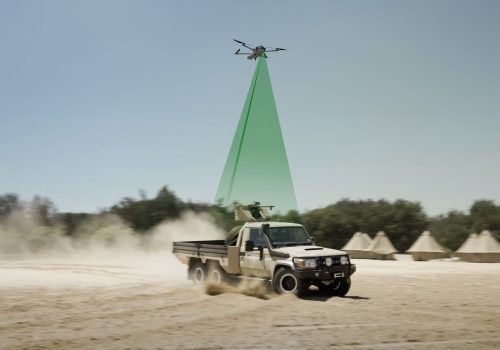Active Radar Cooperating (ARCTM)
Drones have become essential assets for military, national security, and border control due to their exceptional tactical and reconnaissance capabilities over crewed aircraft. However, to ensure safe and reliable operations they must be equipped with robust localisation functionality, especially if satellite navigation systems are unavailable or jammed.
Sensoriis’ Active Radar Cooperating (ARCTM) is a patented system comprising two or more micro radars interacting to deliver a localisation capability based on direct radar range measurements. The system has been designed for high visibility across multiple compatible ARCTM radars and can be used by UAVs to support loitering above a stationary or moving target at a fixed position in GNSS denied environments. In addition, the same ARCTM radar system supports the autonomous landing of a UAV onto a static or moving landing pad.
How it works
Each ARCTM device is configured with a unique code that is reported over the radar carrier frequency. A primary radar will report the range, bearing and elevation to other ARCTM devices whilst ignoring all radar reflections from background infrastructure.
Other benefits:
- Default Silent technology – Each ARCTM device is configured with a unique code, allowing secondary devices to be non-transmitting until interrogated by an associated airborne primary device in a recognised encoded band. This is crucial for maintaining electronic radio stealth in defence operations.
- Low form factor – comprises no moving parts and employs fully electronically controlled antenna arrays suitable for battery-powered operation.
Radar is largely unaffected by poor visibility, lighting, and adverse weather, unlike camera-based localisation.
The ARCTM sytem is being used for precision autonomous landing and loitering scenarios.
ARC-LandingTM

The ARC-LandingTM radar system includes a primary radar installed onto the UAV and secondary radars installed on either a stationary or moving landing pad.
ARC-LoiterTM

ARCTM can be used by UAVs or drones, to support radar-based tethering above a stationary or moving landing pad or target, at a fixed position, without the need for GNSS.